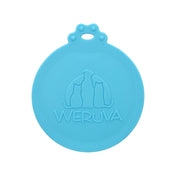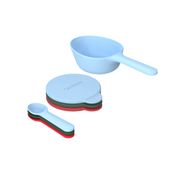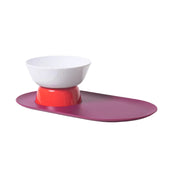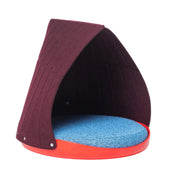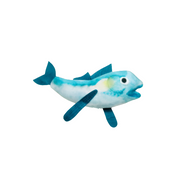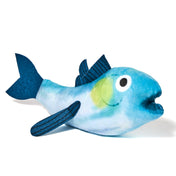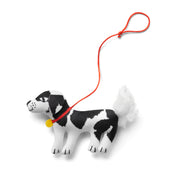When your cat turns their nose up at dinner, it’s hard not to worry. Is something wrong? Are they just being picky? Should you try a new food or call the vet?
Many cats go through phases of being finicky with food, but there are usually simple ways to help. Whether you’ve got a seasoned picky eater or a cat that’s suddenly ignoring their favorite meals, we'll break down why it happens and what to do about it.
Why Won’t My Cat Eat?
It can be frustrating to figure out why your cat isn’t eating. Some cats are just naturally selective, while others may be reacting to a specific change in their routine, environment, or diet. Understanding the cause is the first step to finding the fix.
Common reasons your cat might not be eating:
- Boredom or repetition – Eating the same flavor every day can cause some cats to lose interest.
- Texture sensitivity – Some cats dislike chunks, while others won’t touch anything smooth.
- Temperature issues – Cold food straight from the fridge may be unappetizing.
- Stress or change – A new pet, move, or schedule shift can affect appetite.
- Health concerns – Dental pain, GI upset, or illness can lead to food refusal.
If your cat hasn’t eaten in over 24 hours or is showing signs of illness, it’s likely more than just picky eating and could point to an underlying health issue. Contact your veterinarian right away. But if your cat seems otherwise healthy and is simply turning up their nose at mealtime, there are several ways to encourage them to eat.
5 Quick Tips If Your Cat Won’t Eat
 If your cat is refusing food, here are a few quick fixes to try right away:
If your cat is refusing food, here are a few quick fixes to try right away:
- Warm it up: Gently warming wet food for a few seconds enhances the smell and makes it more tempting for scent-driven eaters. Be careful not to serve anything too hot!
- Rotate flavors: Just like people, cats enjoy variety. Switching up proteins or recipes can keep meals more exciting.
- Try a topper: Adding a gravy pouch or a sprinkle of freeze dried cat food on top of their usual meal can entice hesitant eaters. It adds flavor, aroma, and texture picky cats love.
- Serve small, fresh portions: Cats often prefer meals that feel “just served” over food that’s been sitting out.
- Offer a different texture: If your cat avoids chunks or dry bits, consider switching to a puréed or minced texture. The right texture can make all the difference for a picky cat.
Why Wet Food Is Worth It
Even if your cat isn’t immediately on board with wet food, it’s still worth the effort to make it work. Wet food provides essential hydration, which supports urinary health, digestion, and wellness. This is especially important for cats who don’t drink much water on their own.
Cats often imprint on their usual food, so it’s not uncommon for those used to dry food to resist switching at first. They may not recognize the smell, or they might not like the feel of certain wet textures. But with time and gradual transitions, most cats can learn to enjoy it.
Here’s how to encourage that shift:
- Start with smoother textures that are easier to lick
- Mix wet food with a bit of their dry food to ease the transition
- Use a shallow dish so their whiskers don’t get bumped
- Stay consistent and offer fresh meals regularly
Finding the best wet cat food for picky cats often comes down to a little trial and error. But the health benefits are well worth it.
Find the Texture Your Cat Will Love
Cats can be incredibly particular about texture. Some love to lick, others prefer to chew. That’s why offering a variety of textures can help solve mealtime stand-offs. Here are a few popular formats to try:

- Smooth Hydrating Purées – For cats who like to lick their meals or need extra hydration, including senior cats or those with dental issues.
- Shreds in Broth and Gravies – For cats that enjoy moisture and a bit of bite, shredded meats in flavorful broths are a popular pick.
- Minced Meals in Gravy – A middle-ground texture that provides small, manageable bites with plenty of savory moisture.
When your cat is not eating wet food, the right texture might be the missing piece. Offering a few options can help you zero in on what your cat actually enjoys.
Why Try Weruva?
If you’ve tried different pet foods and your cat still won’t eat, the issue might not be just the flavor. It could be the texture, moisture, or the ingredient quality. That’s where Weruva stands out.
Our recipes feature real, recognizable ingredients in a variety of textures that cats actually want to eat. Meals are packed with protein and hydration to support overall health and entice picky eaters.
We often hear from pet parents that Weruva is the first bowl their picky cat came back to after refusing everything else. Whether your cat prefers purées, shredded meats, or something in between, our lineup is built to help your cat love food again.
And if your cat prefers something light and crunchy, Weruva Cat Freeze Dried can be used as a full meal, a topper, or even a treat. It’s fully cooked and packed with flavor, perfect for finicky cats who need something new to spark their appetite.
Helping Your Picky Cat Eat Again
If your cat isn’t eating, you’re not alone. Many cats go through phases of being fussy with food. The key is to stay calm, observe their behavior, and make small, thoughtful changes to encourage a healthy appetite.
Whether it’s warming their food, offering new textures, or rotating flavors, the right solution is out there. With patience, and a little help from high-quality wet food, you can get even the pickiest cat back to the bowl.





